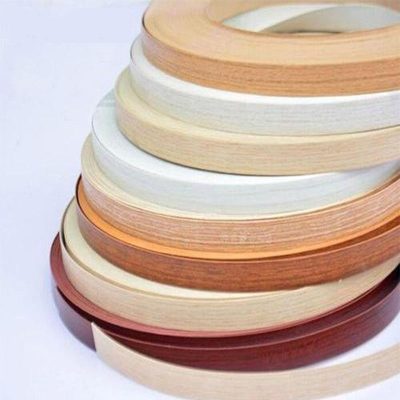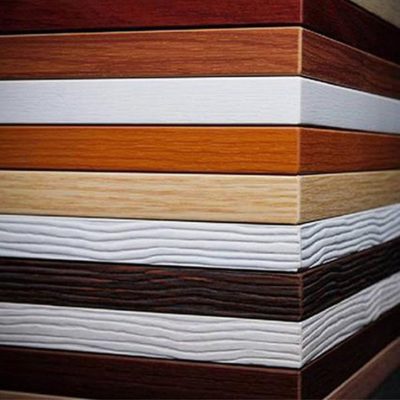Plywood edge banding is typically available in various thicknesses to accommodate different types of plywood and design preferences. The thickness of plywood edge banding can range from approximately 0.5mm to 3mm or more, depending on the manufacturer and the specific requirements of the application.

The choice of edge banding thickness depends on factors such as the thickness of the plywood panel, the type of edge treatment you want to achieve, and the overall design aesthetic. Here are some common thickness options and their typical uses:
- 0.5mm to 1mm: Ultra-thin edge banding is often used for lightweight panels and furniture where a minimalistic and subtle edge treatment is desired. It is suitable for applications where you want to add a protective layer without significantly altering the appearance.
- 1mm to 2mm: This is a common range for standard edge banding thickness. It provides more substance and protection to the edges of plywood panels, giving a slightly more noticeable appearance while still maintaining a clean and unobtrusive look.
- 2mm to 3mm or more: Thicker edge banding is often used when you want to create a more pronounced and substantial edge profile. Thicker edge banding can give the appearance of a thicker solid wood edge or add a bold decorative element to your furniture or panels.

When selecting the appropriate thickness of plywood edge banding, consider the following factors:
- Plywood Thickness: The edge banding thickness should be proportionate to the thickness of the plywood panel to achieve a balanced look.
- Design Intent: Consider the desired visual impact. Thicker edge banding can create a bolder statement, while thinner edge banding provides a more subtle finish.
- Durability: Thicker edge banding offers more protection to the plywood edges against wear and impacts.
- Application: Some projects may require specific edge banding thicknesses to accommodate hardware, joinery, or design elements.
- Curved Edges: Thinner edge banding is more flexible and suitable for curved edges, while thicker edge banding might be less suitable for tight curves.
Before purchasing plywood edge banding, it’s a good idea to consult with your supplier or manufacturer to ensure you select the right thickness for your specific project needs.
